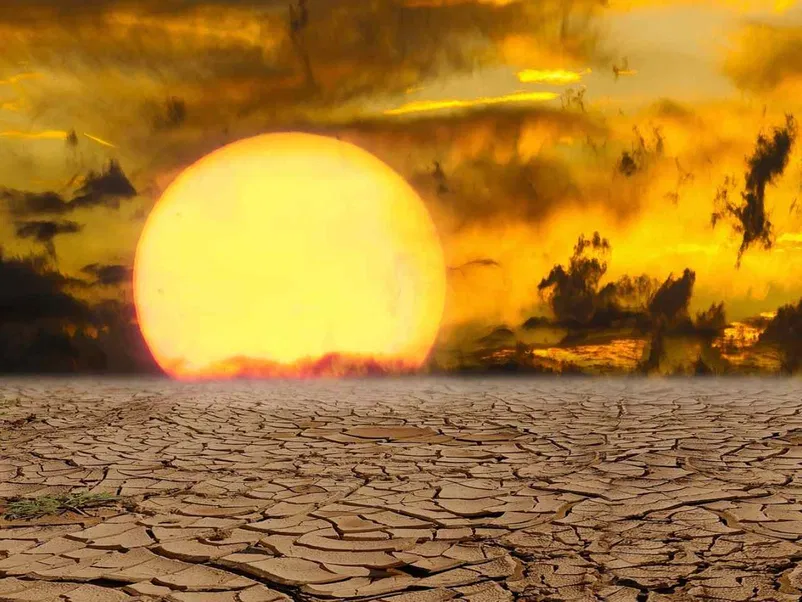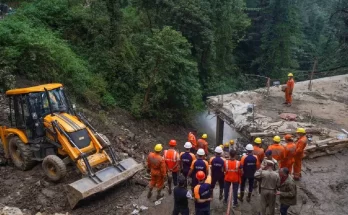Searing temperatures could hit livelihoods, damage crop and help breed vector-borne diseases, scientists warn.

Image used for representational purpose. (Photo credit: Pixabay)
Climate change has induced increasing number of heat waves India, and more than 90% of the country is ill- equipped to handle these searing temperatures, a new study has revealed.
The study, published on Wednesday in the journal ‘PLOS Climate’, posits that “more than 90% of the country is at extremely cautious or dangerous levels of adversely impacting adaptive livelihood capacity, food grains yield, vector-borne disease spread and urban sustainability.” This could take a toll on India achieving the Sustainable Development Goals (SDG).
Incidentally, the study comes days after a dozen people died due to heat stroke at an open ground event in Maharashtra and at a time when much of eastern India and parts of Indo-Gangetic plains are in the grip of scorching temperatures.
Suggesting a re-look at India’s assessment of the impact of such extreme weather events, authors Ramit Debnath, Ronita Bardhan, Michelle L. Bell said: “The manner in which climate vulnerability is assessed currently may not reveal the actual impact of how the heat waves due to the changing climate scenario may impede SDG goals journey.”
There are 17 SDGs; aimed at providing better health, ensuring no poverty, decent work and economic growth and assuring prosperous, peaceful life among other targets. India is a signatory to the global goals to be achieved by 2030.
“Due to the unprecedented burdens on public health, agriculture, and other socio-economic and cultural systems, climate change-induced heatwaves in India can hinder or reverse the country’s progress in fulfilling the SDGs,” the authors said.
The researchers – Debnath and Bardhan are from University of Cambridge, United Kingdom, while Bell is from Yale University, United States of America – worked out an analytical evaluation of heat index (HI) with Climate Vulnerability Index (CVI) that showed India’s unpreparedness.
In simple terms this 90% of the country’s population isn’t quite ready to face the impact of increased heat waves. This could then impact their livelihood. For instance, a rickshaw puller’s ability to drive his vehicle will be adversely impacted in extreme heat. Another impact is on food grain yield, the kind of impact India saw in 2022 when untimely heat wave drastically reduced wheat production in Punjab and Haryana.
April 2022 in India was the hottest in 122 years, since systematic record-keeping began. As per the National Institute of Disaster Management (NIDM), the cumulative heatwave-related mortality in India has crossed 22,000 since 1992. Projections by the government have shown that the heat waves will impact labour productivity, economic growth, and quality of life of around 310-480 million people.
How the study took shape
Stating that at present, India assesses its climate vulnerability through a national Climate Vulnerability Index (CVI), Debnath said, “To comprehensively understand India’s climate vulnerability, a cumulative representative index is imperative, which accounts for the co-occurrence and collision of (multiple) climate events.”
Troubled with lack of data at a granular level – the district level for instance-the researchers set the scope of study at a state level and an urban scale. In the first stage, the CVI in the country was analysed using government data in public domain. Next, estimates of the Heat Index (HI) and temperature anomaly across India for April 2022 was considered.
The results showed that more than 90% of India – which is otherwise considered as ‘low’ or ‘moderate’ vulnerability through CVI – is in the ‘extremely cautious’ or ‘danger’ range of heatwave impacts through Hl.
Then, a scaled-down analysis was performed at an urban level for Delhi to evaluate its Hl and assess its impact on the national capital’s urban sustainability. This was done as a case study to show the severity of heatwaves at an urban scale, especially emphasising the need for contextualised heatwave impact studies.
Rethinking India’s climate adaptation policies
The researchers then compared India’s growth on the SDG chart and extreme weather-related mortality from 2001- 2021. They said that this method of analysis provided “an opportunity to rethink India’s climate adaptation policies through international cooperation in designing holistic vulnerability assessment methodologies.”
Last month, a report by Delhi-based think tank, Centre for Policy Research (CPR) pointed out several shortcomings in the Heat Action Plans (HAPs) that scores of cities across India are preparing, and warned that this could “wreak havoc on the economy and people’s health”.
Commenting on the University of Cambridge analysis, Aditya Valiathan Pillai, one of the authors of the CPR report, said, “There is no doubt that there needs to be a lot more investment in local capacity building. It is incredibly important as these are the people who regulate daily life.” Pillai highlighted the role of police and the administration, who have a say on the activities on ground – for instance, regulating the hours when construction work happens in peak summers – and asserted that these require state and central funding.
“National Disaster Management Authority (NDMA) and other civil society organisations too e carrying out awareness, which can help reduce some of the economic impact. There need for awareness not just during the heat wave but before it too. For instance, the authorities have identified the hottest blocks or districts, there the people can be told what exactly is a heat wave, what should be done to prevent damage to one’s health, what time should one step out or even, how to notice symptoms,” he said, adding, “But these are only recommendations, there is no legal mandate to it.”
(This story first appeared on news9live.com on Apr 28, 2023 and can be read here.)



